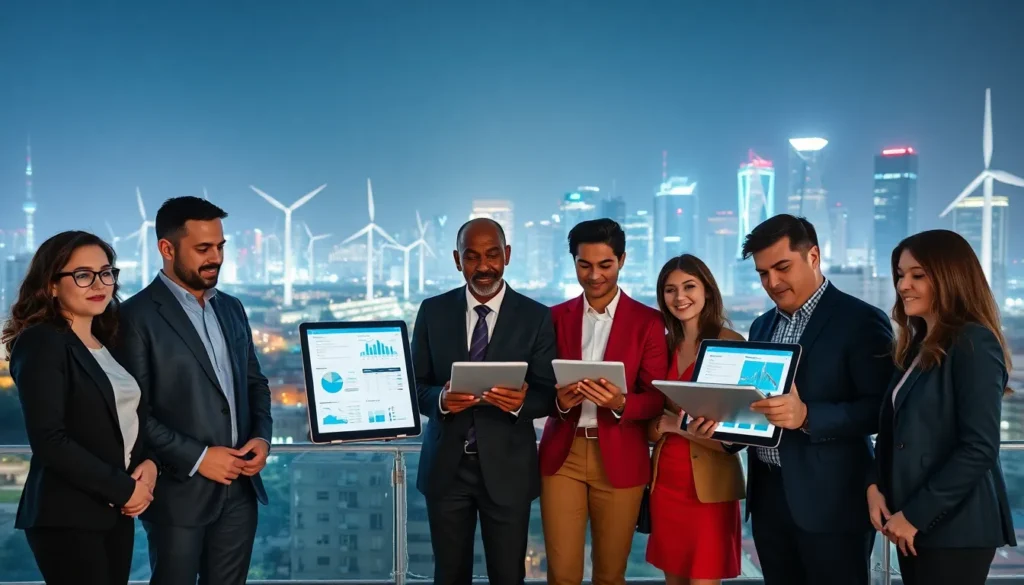Picture this: a world where energy flows seamlessly, illuminating our homes and powering our devices without a hitch. That’s the dream of tomorrow’s energy revolution, where the phrase ‘LotsOfPower’ doesn’t come with the customary tears of frustration. As we gaze into the crystal ball of energy management, it’s hard not to feel excited about the bright avenues before us. But wait, on this journey to a promising future, do we really have to endure the usual headaches? Spoiler alert: no, we don’t. Buckle up as we jump into how we can achieve all this with confidence and clarity.
Table of Contents
ToggleUnderstanding the Concept of LotsOfPower

At its core, the concept of ‘LotsOfPower’ isn’t just about having an abundance of energy. It’s about harnessing that energy effectively. Picture a bustling city, lights twinkling, vehicles zipping around, and factories operating at full throttle. This vibrant scene relies on a deliberate and intelligent approach to energy management. LotsOfPower stands for the future where energy is not only plentiful but also accessible and manageable.
Individuals and organizations alike need to open their minds to innovative strategies that redefine energy utilization. This requires a shift from traditional energy sources to a diversified energy portfolio, encompassing renewables like solar, wind, and even geothermal. Decentralized energy systems, such as microgrids, are also gaining traction. These systems are capable of providing consistent power without the traditional transmission issues. In essence, it’s about creating a circle of efficiency where energy is created, shared, and utilized with minimal waste.
The Importance of Energy Management
Energy management is not just a buzzword: it’s a necessity in our modern lives. Imagine living in a future where every household not only consumes energy but contributes back to the grid. This cycle doesn’t just foster sustainability: it also builds resilience against fluctuations in energy supply. The reality is that smart energy management can lead to substantial cost savings and reduced environmental footprints.
They say time is money, and in today’s world, energy efficiency is a wallet’s best friend. When people adopt energy-saving practices, they not only slash their bills but also help in cutting down emissions. What’s more, intelligent systems monitoring energy consumption pave the way for proactive insights. As a result, managing energy becomes easy for both the individual and the business, leading to a collective step toward energy independence.
Strategies for Harnessing Tomorrow’s Power
To truly harness tomorrow’s power, innovation is key. Companies around the globe are stepping into the future with cutting-edge technologies. One notable player is the advancement of smart grids. These systems use real-time data to manage electricity flow, ensuring that it reaches the right place at the right time. As a result, energy loss is minimized, and reliability increases.
Innovative Technologies Driving Change
Another exciting trend is the integration of Internet of Things (IoT) devices. Smart appliances can adjust their operation based on peak and off-peak energy times, reducing strain during high-demand periods. Also, AI-driven analytics allow for predictive maintenance in energy facilities, minimizing downtime and enhancing efficiency.
Sustainability and Environmental Impacts
On a larger scale, sustainability remains a cornerstone of tomorrow’s energy strategies. By investing in renewable energy sources and technologies, the environmental impact can be significantly reduced. Wind and solar have recently made headlines for their rapidly declining costs, enabling broader adoption. Communities adopting these sustainable practices show that a commitment to the planet doesn’t have to conflict with economic progress.
Challenges in Energy Transition
Even though the promising horizon, transitioning to a more sustainable energy future isn’t without its speed bumps. One major challenge lies in the existing infrastructure, often outdated and linear in nature. Transforming this system requires significant investment and a focused commitment from stakeholders. It’s essential for them to unite behind a shared vision to support energy innovation.
Another obstacle is the public perception of renewable energy. Misinformation and skepticism can hinder progress. To tackle this, education plays a fundamental role, helping individuals understand the benefits of a greener approach. Incentives for adopting renewable technologies can encourage acceptance and actively engage communities in the transition.
The Role of Policy and Regulation
Policies and regulations shape the landscape of energy management. Governments have a crucial responsibility in promoting sustainable practices. For instance, offering tax breaks for renewable energy installations encourages businesses and homeowners alike to consider adopting cleaner options.
Also, stringent regulations about emissions can streamline efforts toward cleaner energy usage. When policies align with public sentiment, it creates a powerful synergy that propels the energy transition forward. Collaboration among different levels of government, industry leaders, and the community is the backbone of this transformation.








